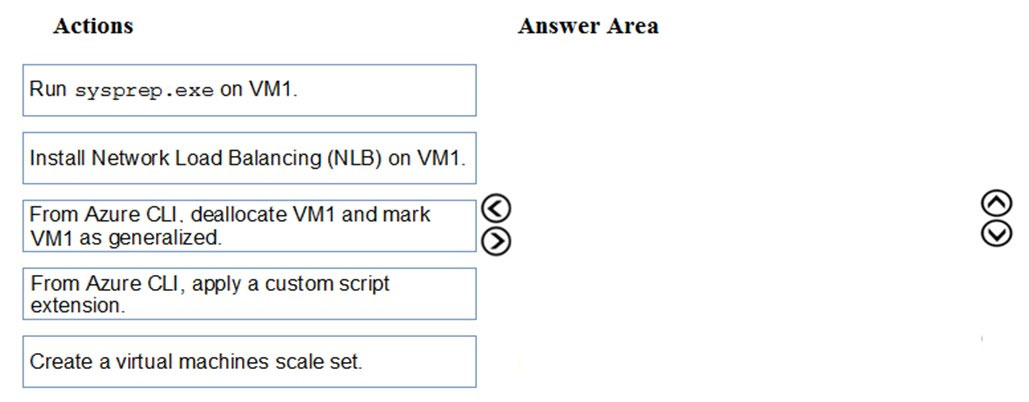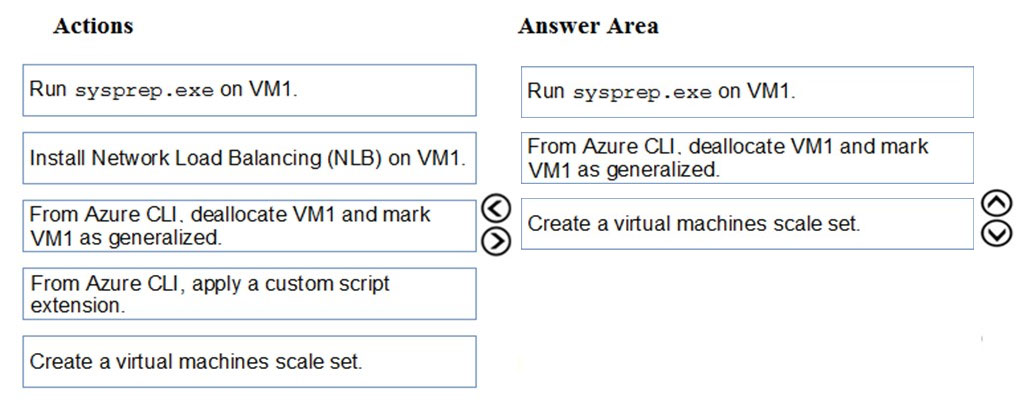

DRAG DROP -
You have an Azure virtual machine named VM1 that runs Windows Server 2016.
You install a line-to-business application on VM1.
You need to create an Azure virtual machine by using VM1 as a custom image.
Which three actions should you perform in sequence? To answer, move the appropriate actions from the list of actions to the answer area and arrange them in the correct order.
Select and Place:

SAMBIT
Highly Voted 4 years, 3 months agoahorva
3 years, 6 months agoa_r_c
4 years, 2 months agotteesstt
3 years, 10 months agogizda2
3 years, 9 months agoScubaDiver123456
3 years, 7 months agoSnakePlissken
Highly Voted 4 years, 1 month agogizda2
3 years, 9 months agoPJon
Most Recent 3 years, 9 months agoPinto
3 years, 11 months agoaltafpatel1984
3 years, 5 months agoMj11Az
4 years, 1 month agotita_tovenaar
3 years, 11 months agoitsamemario
4 years, 4 months agojank
4 years, 4 months agordemontis
4 years agoBlimpy
4 years, 6 months agoabadal
4 years, 5 months agoStephan99
4 years, 6 months agorazfallow
4 years, 6 months agoStevezzc
4 years, 6 months agoNiro
4 years, 6 months agoScubaDiver123456
3 years, 7 months ago